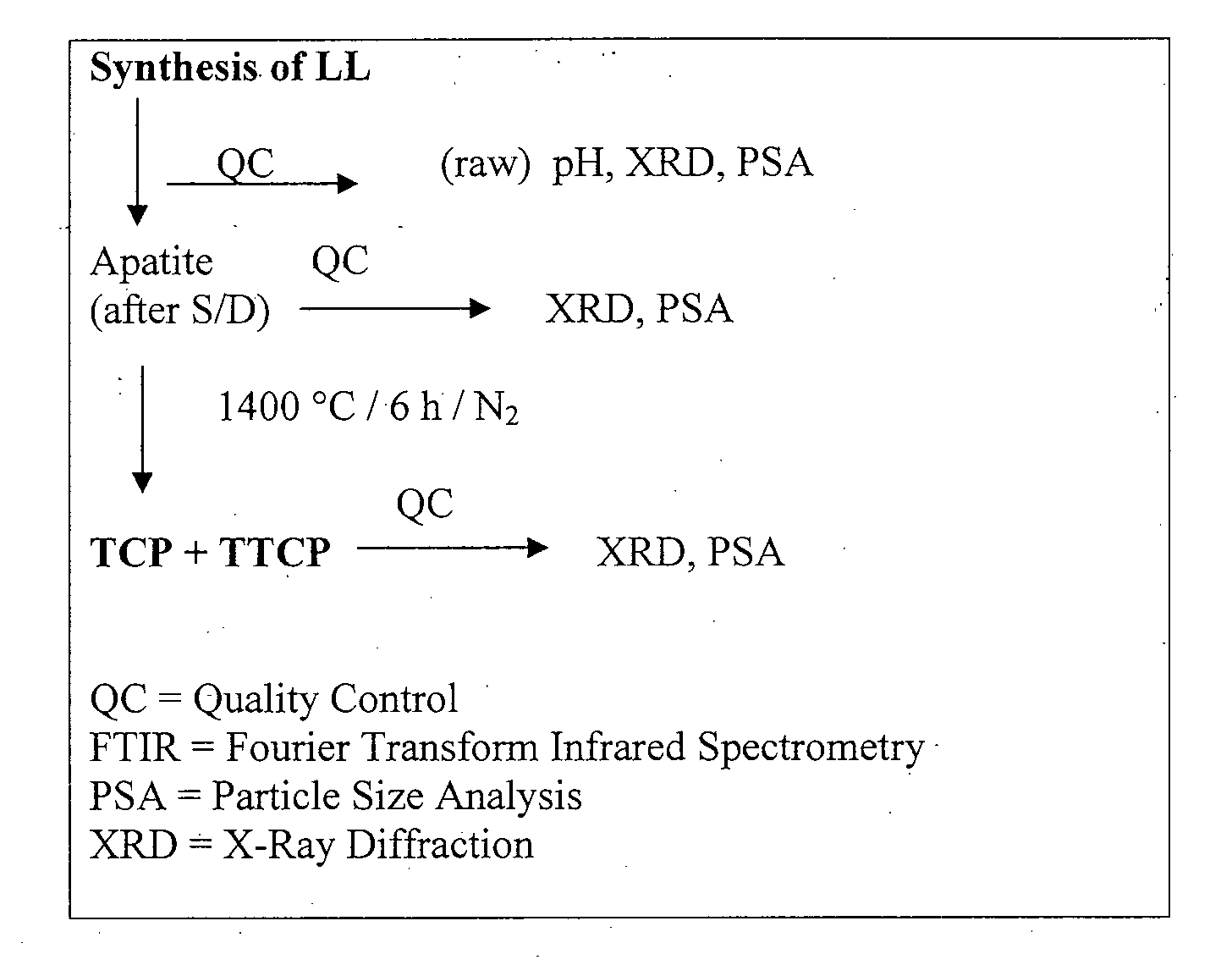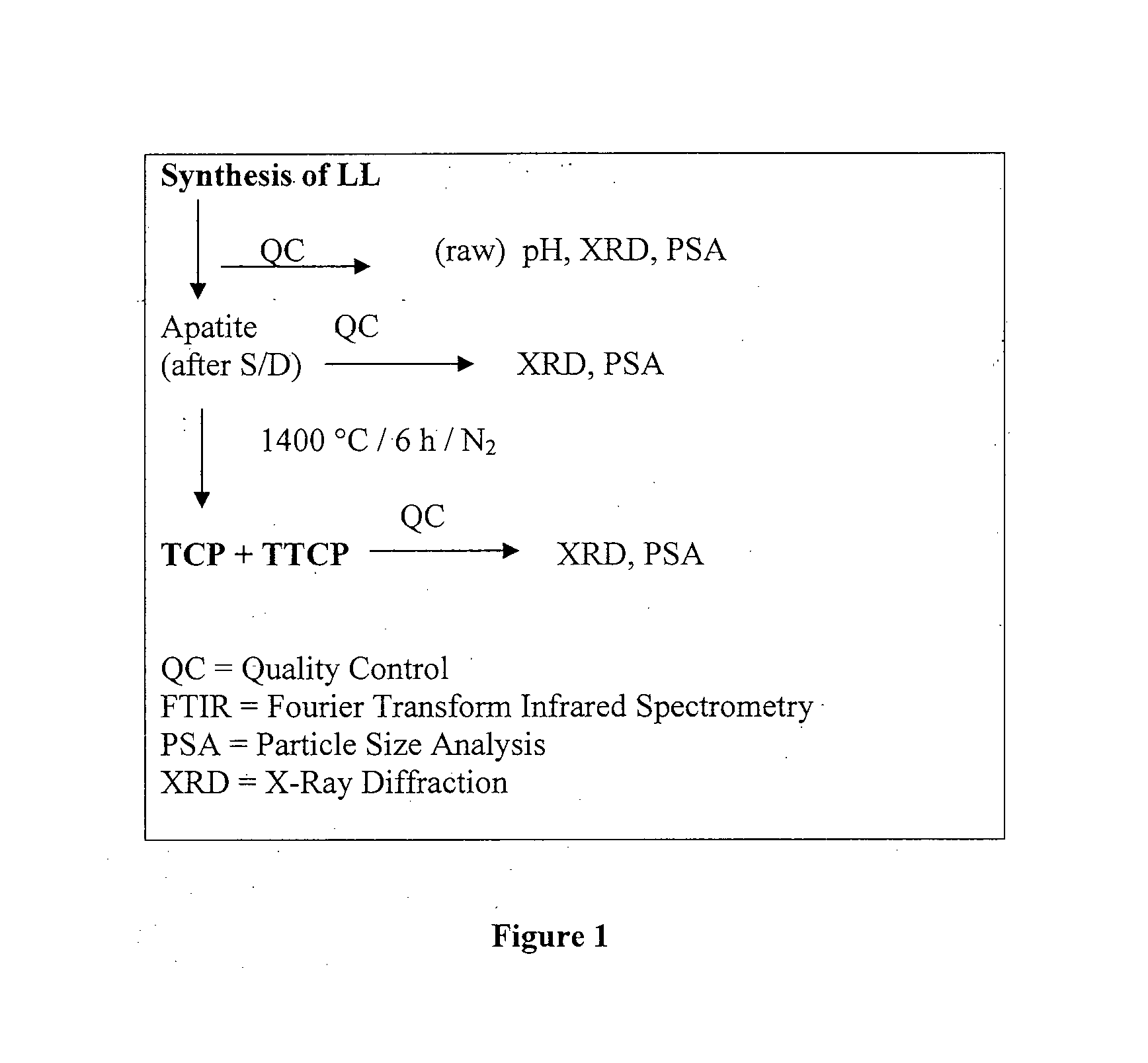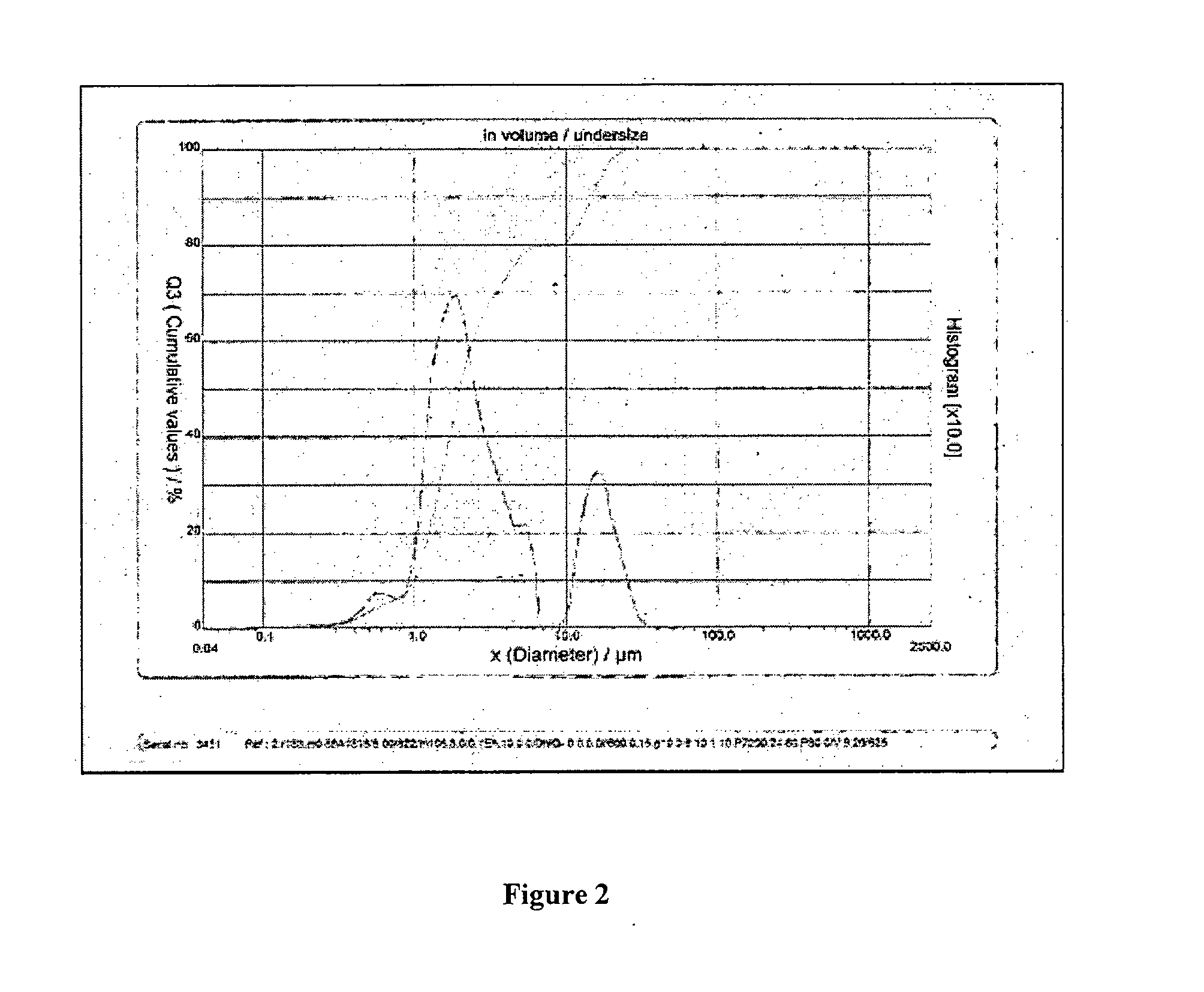Method of converting limestone into tri-calcium phosphate and tetra-calcium phosphate powder simultaneously
- Summary
- Abstract
- Description
- Claims
- Application Information
AI Technical Summary
Benefits of technology
Problems solved by technology
Method used
Image
Examples
Embodiment Construction
[0024]Disclosed is a method for producing tri-calcium phosphate and tetra-calcium phosphate (TCP+TTCP) mixture using local limestone as the starting raw material, and is as summarized in FIG. 1.
[0025]Step 1: Synthesis of Local Limestone
[0026]Day 1: Preparation: During the first day, 104.46 g of local limestone (Lime & Lime Products Sdn. Bhd., Baling Kedah) is weighed on an Analytical balance (Precisa) using a plastic spatula and a 3000 ml beaker. The limestone has the bi-modal particle size range of between 0.1-10 microns with median at 2 microns, and 10-30 microns with median at 15 microns as shown in FIG. 2. The crystallographic structure of limestone is shown in the x-ray diffraction spectra of FIG. 3.
[0027]Then 1250 ml of double distilled deionised water (DDI water) from DDI water machine (Aquatron, A4000D) is prepared in a measuring cylinder and mixed with the local limestone in the 3000 ml beaker. This beaker is placed on a hot-plate (Favorit, HP07707V2) and assembled with a s...
PUM
| Property | Measurement | Unit |
|---|---|---|
| Temperature | aaaaa | aaaaa |
| Temperature | aaaaa | aaaaa |
| Temperature | aaaaa | aaaaa |
Abstract
Description
Claims
Application Information
 Login to View More
Login to View More - R&D
- Intellectual Property
- Life Sciences
- Materials
- Tech Scout
- Unparalleled Data Quality
- Higher Quality Content
- 60% Fewer Hallucinations
Browse by: Latest US Patents, China's latest patents, Technical Efficacy Thesaurus, Application Domain, Technology Topic, Popular Technical Reports.
© 2025 PatSnap. All rights reserved.Legal|Privacy policy|Modern Slavery Act Transparency Statement|Sitemap|About US| Contact US: help@patsnap.com



